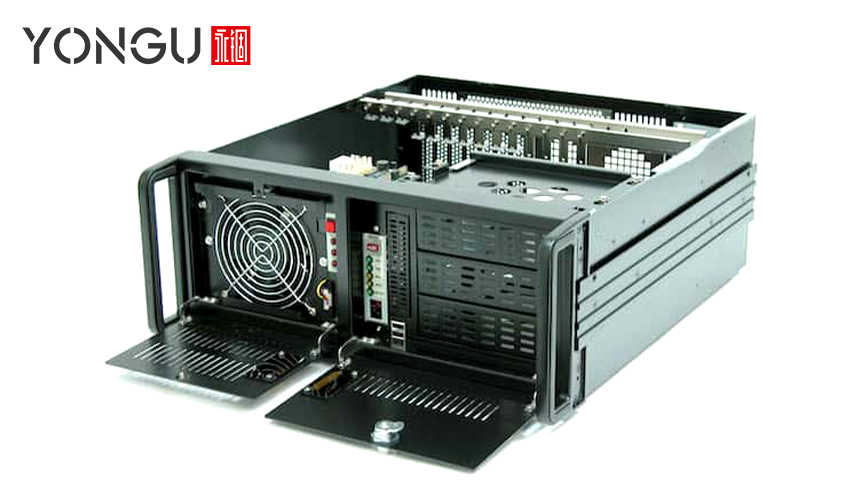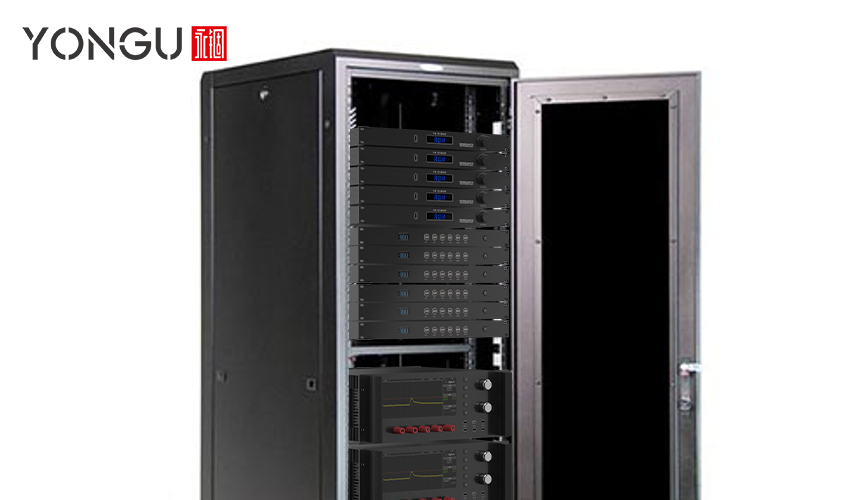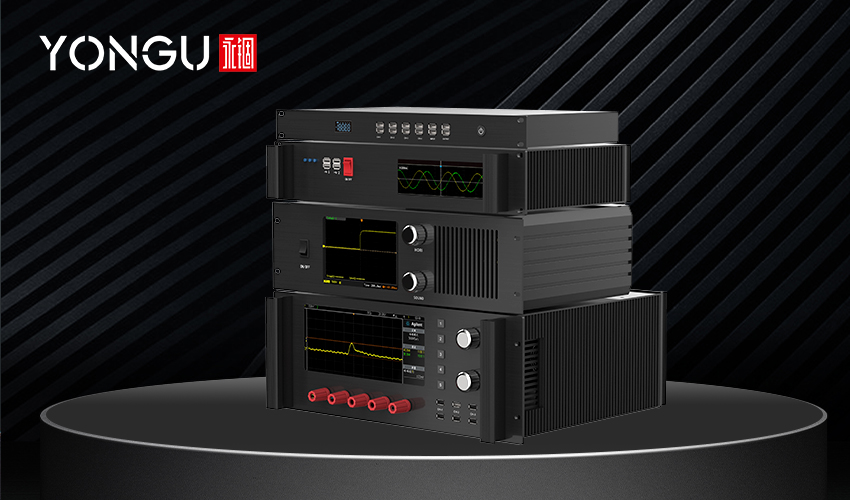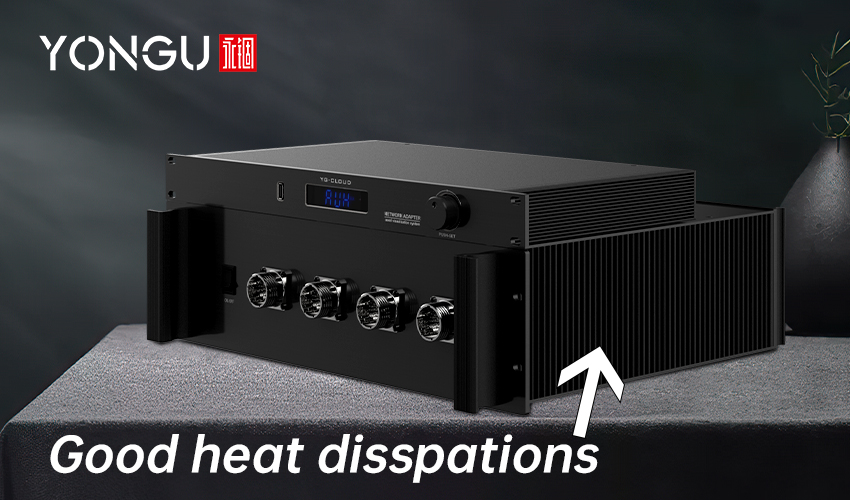
Fundamentals of Racks
Rack Essentials
Racks are used to store and organize IT equipment to maximize space and other resources. With two or four vertically oriented rails and a supporting structure, rack components are crucial for their functionality. Generally, steel or aluminium rails and structures support heavy equipment. Screws can be used to attach rack equipment to the rails, which feature square or round holes. When square anchoring slots are used, the screws are held in place by cage nuts, which may be withdrawn and changed as required. You may provide additional support to a rack by mounting horizontal rails or shelves.
Rack Standards
There are standard dimensions for the rails, mounting holes, cabinet sizes, and other specifications in the industry. There is no need to worry about the compatibility of rack-mounted equipment with ordinary racks. Most IT equipment is approximately 19 inches wide and must adheres to standard international laws. Additionally, there is a standard for extensive telecommunications equipment that is 23 inches in width. The vast majority of information technology applications make use of racks and equipment measuring 19 inches.
Rack Units
When it comes to 19-inch racks, the height and depth might vary. There is usually considerable wiggle room in the rack rail depth. Rack units are a defined way of dividing the height of a rack. Rack or equipment cabinet height is denoted by the letter "U" followed by the number of rack units, each of which is 1.75 inches tall. There are 42 units in a 42U rack. A 42U rack may accept any combination of conventional rack equipment. Be aware that your equipment's weight and capacity must be considered when choosing a rack.
Rack Types
There are three principal racks, including
Open Racks
Frames are open on all sides and equipped with mounting rails but do not have any doors or sides. They're employed when a rack doesn't need to manage ventilation or offer security. Open frame racks are suitable for high-density cabling in network wire closets and distribution frames because they give easy access and space. Open frame racks can feature two or four "posts". Two-post racks require less depth but hold less weight. IT equipment that uses all four vertical mounting rails may need a separate kit for two-post installation.
Rack Enclosures
They come with front and rear doors that can be removed, side panels that can be replaced, and four mounting rails that can have their height modified on the vertical axis. Doors, often both front and back, have vents to let air to travel from the front to the back via the equipment. Rack enclosures are suitable for the storage of equipment that is heavy, hot, or high in power. Locking doors and side panels enable rack-level equipment security. Data centres and server rooms often use enclosures. More expansive and deeper cabinets give more cabling space than typical enclosures.
It is possible to construct enclosures lacking doors and side panels, which results in much greater capacity to hold load. A common feature of enclosures is the addition of additional rails that can house vertical cable management as well as main distribution units.

Wall Mount Racks
They are designed to be attached to the wall, which enables them to make better use of available floor space and to fit into nooks and crannies that standard racks cannot. Depending on the use, they can be either enclosed enclosures or open racks. They are typically less sturdy and unable to sustain as much weight as their floor-standing counterparts because of their smaller size. Rolling wheels may be added to the cabinets to make them stand independently.
Cost Saving Using 19” Rack Enclosure
In the current state of the economy, it is more crucial than ever to look for ways to save costs. Currently, server rack initiatives need to undergo restructuring and value engineering to continue receiving funding. Taking a new look at the enclosure requirements is a necessity that is frequently neglected for some reason. To present a unique perspective, the engineer needs to take into account all of the following:
Incorporate Future Growth Now
The 42U enclosure is the most often used in the server industry. As you prepare for your existing server requirements, this is valuable information. Planning for the future might save you money in the long run. Your firm's expansion and your human resources development should be considered part of your IT strategic plan. Prepare now for future growth and save money in the process.
- In the long run, you'll save money by purchasing open frame racks that are a little taller than you now require.
- In terms of both future prices and labour costs, overbuying can save you money.
- A taller cabinet can be installed for a fraction of the cost of a new cabinet in the future.
Measure, Measure, Measure
The 42U enclosure has become the industry standard; however, not all servers are the same. Analyze the current state of your tools. Double-check your measurements to be sure you're getting open-frame racks according to your needs. Purchasing equipment you won't utilize wastes time, work, and money. All waste, no matter what its form, is expensive.
Quality Over Quantity
It's always a good idea to save money, but going overboard is never a good idea. It's essential to consider your purchase's quality while planning for future expansion. If you buy anything now that will need to be replaced in the future, you've squandered your money. It would be best if you asked yourself the following:
Traditional Rack Cabinet Or A Desktop Cabinet
Rack enclosures are required to be utilized according to custom needs if the required height of the equipment is more significant than a few "U" (1.75 inches). Desktop cabinets can now be a low-cost option for those mounting requirements that are of medium size. This is due to improvements in both their features and their production techniques. As a matter of fact, due to the decreased weight and load requirements, it is sometimes more cost-effective to purchase two 18 U cabinets as opposed to one 36 U cabinet rack.
Enclosed Equipment Rack
It is generally sufficient to utilize a relay rack when the equipment is operated in a lab or an enclosed location. Four-post double relay racks can now support even the highest weights. Open racks are the ideal solution if it's not on display. If a welded rack is required, one alternative is to purchase the cabinet rack without the sides and door, removing unused components.

Manufacturer’s Standard Enclosure Heights
Suppose the manufacturing company has a standard rack of 20 U and the requirements call for 18 U. In that case, it will be more cost-effective to consider leaving space in the rack and covering it with corresponding panels than to create a unit that meets the specific required dimensions. The identical reasoning may be used to the depth as well. Extending the rails forward a few inches makes it simple to create empty space at the back of the cabinet when using adjustable panel mounting rails. This is because the rails are adjustable.
Inclusion Of Server Cabinet Accessories
The pricing of a 19-inch rack enclosure might be challenging to compare because some contain doors or sides while others do not. To ensure you get the most significant value for your money, thoroughly study the product specs. Also, remember that "turn-key" units may have many "extras" that are important to you, such as shelving, glass doors, fan trays, etc. Because these things are often included in one package rather than sold separately, it is typically less expensive for the producer. As a result, the sale price is likely to reflect these savings.
Cool A Server Rack
Constructing a cold and a hot aisle out of racks is common. This helps to keep the equipment from getting too hot from the exhaust.
However, today's high-density data centres require more airflow than can be provided by this method alone. Four elements must be taken into consideration when it comes to server rack cooling:

Minimizing Air Mixing
To avoid air leakage from the equipment's sides, ensure the area between the mounting rails and the side panels is tightly sealed. The server rack may require adding airflow control accessories such as blanking panels and vertical airflow baffles to maximize the utility of aisle containment.
Maximizing Airflow
Using a server rack ventilation system is essential. The cabinet's back should have enough room for cabling and PDUs while allowing free exhaust circulation. Airflow may be increased by as much as 80% with perforated mesh doors.
Utilizing Server Rack Fans
Fans can be installed within the server rack enclosure to enhance airflow further. Although rack-mount fan trays are helpful, they take up valuable rack space. Cabinets with built-in fan cooling are preferable since they are more energy-efficient.
Bringing Cooling to the Rack
Additionally, a cooling system can be included within a standard 19" rack. Rather than depending on a remote CRAC unit, in-rack cooling systems provide cooled air directly to the equipment. Because the airflow route is so tiny, heat dissipates fast, resulting in minimal energy loss.
Effective server rack cooling systems may dramatically cut operational expenses by reducing the volume of cold air required in the data centre and increasing airflow to server racks.
Considering the considerations
mentioned earlier will assist you in being financially self-sufficient. YONGUBOX has more than 20 years of expertise in manufacturing various enclosures. These enclosures not only give the necessary functionality but also assist the project within its budget.
When it comes to design diversity, personalization, and quick and simple installation from U1 to U4, the YONGU C01A 482*1U*L 19-inch Rack Mount Case aluminium enclosure is offered in 26 various configurations with five different rack heights choices.
These boxes are ideal for small construction sites due to their small footprint. By customizing rack unit specifications such as the height, breadth, and length of the rack, as well as hole drilling, surface treatment, printing, and rack screw sizes, it is possible to assemble practically any form of circuit or device quickly and easily, with or without the use of a machine.
There are various jobs where the excavation layout may alter over time. Our 19” rack-mounted aluminium chassis enclosure or rack-mount box can be configured in multiple ways to accommodate these changes.
This lightweight aluminium enclosure for electronics comes with optional extruded side panels, including one flat, one heat sink, two stripes, and optional 2u rack-mount handles. They are designed for Indoor & Outdoor applications with high impact resistance, side openings, and the ability to withstand severe environmental conditions.
For further information and customized product of your requirements, please follow our FACEBOOK for more updates and informations.
You can also contact us at +86 13326782625 or write us [email protected].
The 42U enclosure has become the industry standard; however, not all servers are the same. Analyze the current state of your tools. Double-check your measurements to be sure you're getting open-frame racks according to your needs. Purchasing equipment you won't utilize wastes time, work, and money. All waste, no matter what its form, is expensive.
- Returning products is a waste of time.
- You'll have to pay for shipping and restocking costs in the end.
- It takes time and effort to unpack a server rack that is too small or too heavy to handle your computer, and then try installing and removing the rack.
Quality Over Quantity
It's always a good idea to save money, but going overboard is never a good idea. It's essential to consider your purchase's quality while planning for future expansion. If you buy anything now that will need to be replaced in the future, you've squandered your money. It would be best if you asked yourself the following:
- Are these open-faced racks well-built?
- How well-built is this server cabinet model?
- Inquire whether the cabinet or rack is constructed from high-quality components such as steel frames.
- Is the rack enclosure or cabinet's characteristics meet EIA specifications?
Rack enclosures are required to be utilized according to custom needs if the required height of the equipment is more significant than a few "U" (1.75 inches). Desktop cabinets can now be a low-cost option for those mounting requirements that are of medium size. This is due to improvements in both their features and their production techniques. As a matter of fact, due to the decreased weight and load requirements, it is sometimes more cost-effective to purchase two 18 U cabinets as opposed to one 36 U cabinet rack.
Enclosed Equipment Rack
It is generally sufficient to utilize a relay rack when the equipment is operated in a lab or an enclosed location. Four-post double relay racks can now support even the highest weights. Open racks are the ideal solution if it's not on display. If a welded rack is required, one alternative is to purchase the cabinet rack without the sides and door, removing unused components.

Manufacturer’s Standard Enclosure Heights
Suppose the manufacturing company has a standard rack of 20 U and the requirements call for 18 U. In that case, it will be more cost-effective to consider leaving space in the rack and covering it with corresponding panels than to create a unit that meets the specific required dimensions. The identical reasoning may be used to the depth as well. Extending the rails forward a few inches makes it simple to create empty space at the back of the cabinet when using adjustable panel mounting rails. This is because the rails are adjustable.
Inclusion Of Server Cabinet Accessories
The pricing of a 19-inch rack enclosure might be challenging to compare because some contain doors or sides while others do not. To ensure you get the most significant value for your money, thoroughly study the product specs. Also, remember that "turn-key" units may have many "extras" that are important to you, such as shelving, glass doors, fan trays, etc. Because these things are often included in one package rather than sold separately, it is typically less expensive for the producer. As a result, the sale price is likely to reflect these savings.
Cool A Server Rack
Constructing a cold and a hot aisle out of racks is common. This helps to keep the equipment from getting too hot from the exhaust.
However, today's high-density data centres require more airflow than can be provided by this method alone. Four elements must be taken into consideration when it comes to server rack cooling:

Minimizing Air Mixing
To avoid air leakage from the equipment's sides, ensure the area between the mounting rails and the side panels is tightly sealed. The server rack may require adding airflow control accessories such as blanking panels and vertical airflow baffles to maximize the utility of aisle containment.
Maximizing Airflow
Using a server rack ventilation system is essential. The cabinet's back should have enough room for cabling and PDUs while allowing free exhaust circulation. Airflow may be increased by as much as 80% with perforated mesh doors.
Utilizing Server Rack Fans
Fans can be installed within the server rack enclosure to enhance airflow further. Although rack-mount fan trays are helpful, they take up valuable rack space. Cabinets with built-in fan cooling are preferable since they are more energy-efficient.
Bringing Cooling to the Rack
Additionally, a cooling system can be included within a standard 19" rack. Rather than depending on a remote CRAC unit, in-rack cooling systems provide cooled air directly to the equipment. Because the airflow route is so tiny, heat dissipates fast, resulting in minimal energy loss.
Effective server rack cooling systems may dramatically cut operational expenses by reducing the volume of cold air required in the data centre and increasing airflow to server racks.
Considering the considerations
mentioned earlier will assist you in being financially self-sufficient. YONGUBOX has more than 20 years of expertise in manufacturing various enclosures. These enclosures not only give the necessary functionality but also assist the project within its budget.
YONGU RACK MOUNT ENCLOSURE
YONGU's Rack Mount Aluminium Enclosure is ideal for Electronic Devices enclosure in this era of electrical and electronics equipment.When it comes to design diversity, personalization, and quick and simple installation from U1 to U4, the YONGU C01A 482*1U*L 19-inch Rack Mount Case aluminium enclosure is offered in 26 various configurations with five different rack heights choices.
These boxes are ideal for small construction sites due to their small footprint. By customizing rack unit specifications such as the height, breadth, and length of the rack, as well as hole drilling, surface treatment, printing, and rack screw sizes, it is possible to assemble practically any form of circuit or device quickly and easily, with or without the use of a machine.
There are various jobs where the excavation layout may alter over time. Our 19” rack-mounted aluminium chassis enclosure or rack-mount box can be configured in multiple ways to accommodate these changes.
This lightweight aluminium enclosure for electronics comes with optional extruded side panels, including one flat, one heat sink, two stripes, and optional 2u rack-mount handles. They are designed for Indoor & Outdoor applications with high impact resistance, side openings, and the ability to withstand severe environmental conditions.
For further information and customized product of your requirements, please follow our FACEBOOK for more updates and informations.
You can also contact us at +86 13326782625 or write us [email protected].



